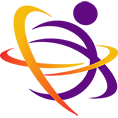Abstract:
Background
Tai Chi has been broadly applied as alternative treatment for many neurological and psychological disorders. Whereas no study using Tai Chi as prophylactic treatment for migraine. The purpose of this study was to preliminarily examine the efficacy and feasibility of a 12-week Tai Chi training on migraine attack prevention in a sample of Chinese women.
Methods
A two-arm randomized controlled trial was designed. Women aged 18 to 65 years and diagnosed with episodic migraine were randomized to either Tai Chi group (TC group) or the waiting list control group. A modified 33-short form Yang-style Tai Chi training with 1 h per day, 5 days per week for 12 weeks was implemented in the TC group, with a 12-week follow up period. The control group received a “delayed” Tai Chi training at the end of the trial. The primary outcome was the differences in attack frequency between 4 weeks before baseline and at the 9–12 weeks after randomization. The intensity and duration of headache were also measured. The feasibility was evaluated by the maintenance of Tai Chi practice and satisfactory level of the participants toward training.
Results
Eighty-two women were randomized, finally 40 in TC group and 33 in control group were involved in the analysis. On average, women in TC group had 3.0 times (95% CI: −4.0 to −2.0, P < 0.01) and 3.6 days (95% CI: −4.7 to −2.5, P < 0.01) reduction of migraine attack per month. Compared with the control group, the differences were statistically significant (−3.7 attacks/month, 95% CI: −5.4 to −1.9; and −3.0 migraine days/month, 95% CI: −4.5 to −1.5; both P < 0.001). The intensity and duration of headache had 0.6 (95% CI: −1.2 to −0.0, P < 0.05) units and 1.2 (IQR: −5.0 to 1.1, P < 0.05) hours reduction in TC group, respectively. Most of the participants (69.2%−97.4%) were satisfied with the training. At the end of 24 weeks, on average, the participants maintained 1.5 times of practice per week and 20 min for each practice.
Conclusion
The 12-week Tai Chi training significantly decreased the frequency of migraine attack. It was acceptable and practicable among female migraineurs.
If you want to find the original article, please click the link below:
